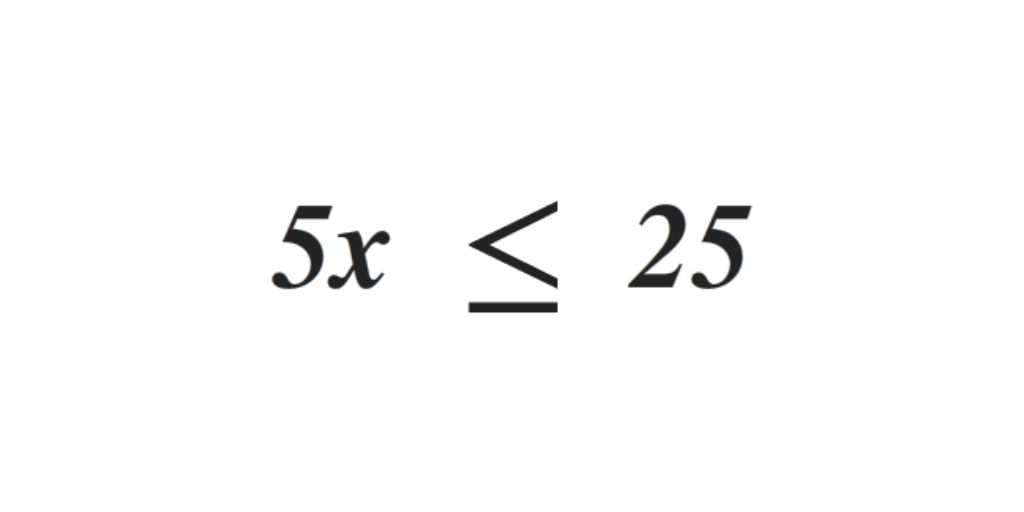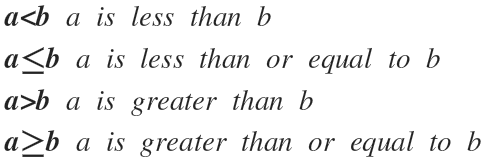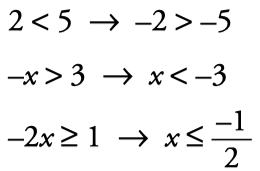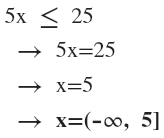Inequalities are algebraic expressions. They have two members between which one of these signs appears: <, = <,>,> =. Solution of an inequality is called any value of the unknown that makes the inequality true.

Sometimes, the statements that give rise to an algebraic expression do not say “is equal to”, but “is greater than” or “is less than”. These statements give rise to expressions like these:


Inequalities usually have infinite solutions (there is only one equal number, but there are infinite numbers less than another). If the two members of an inequality are multiplied or divided by a negative number, the inequality changes direction.

Solving inequalities
To solve an equation, we followed a series of steps: remove parentheses, remove denominators, pass x to one member and numbers to the other … All of them are valid, exactly the same, for inequalities, except one:
If the two members of an inequality are multiplied or divided by a negative number, the inequality changes direction.

Ejemplo de inecuación:

Exercices
1. Solve:





0 Comments